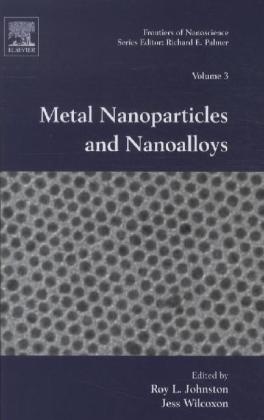Read more
Klappentext The field of nanoscience has undergone tremendous growth in the past decade as the number of applications of nanoparticles and nanostructured materials have proliferated. Metal nanoparticles have attracted particular interest due to their versatility of application in areas as diverse as catalysis, medicine and opto-electronics. A unified discussion of the inter-relations between modelling, synthesis and physical properties of nanoparticles and nanoalloysA discussion of the most promising new catalytic and photocatalytic applications of nanoparticles and the approaches used to achieve these goalsA tutorial introduction which provides a basis for understanding the subsequent specialized chapters Zusammenfassung The field of nanoscience has undergone tremendous growth over the years as the number of applications of nanoparticles and nanostructured materials have proliferated. This title features a discussion of the inter-relations between modelling, synthesis and physical properties of nanoparticles and nanoalloys.
List of contents
Metal Nanoparticles & Nanoalloys, Roy L. Johnston
Nanoparticles-Preparation, Characterization and Physical Properties, J.P. Wilcoxon
Chemically protected metal clusters/nanoparticles, Hannu Häkkinen
Theoretical Modelling of Oxide-Supported Metal Nanoclusters and Nanoalloys, Alessandro Fortunelli and Ricardo Ferrando
Scanning Transmission Electron Microscopy Studies of Mono- and Bimetallic Nanoclusters, Ziyou Li
Application of Gold Nanoparticles in Catalysis, Graham J Hutchings and Jennifer K Edwards
Report
"European physicists and chemists explore particles of metal in the range of 1-20 nanometers from the perspectives of preparation, characterization, and physical properties; insights from theory and computations into ligand-protected gold nanoclusters as superatoms; the theoretical modeling of oxide-supported metal nanoclusters and nanoalloys; scanning transmission electron microscopy studies of monometallic and bimetallic nanoclusters; and applying gold nanoparticles in catalysis."--Reference and Research Book News, August 2012, page 247

